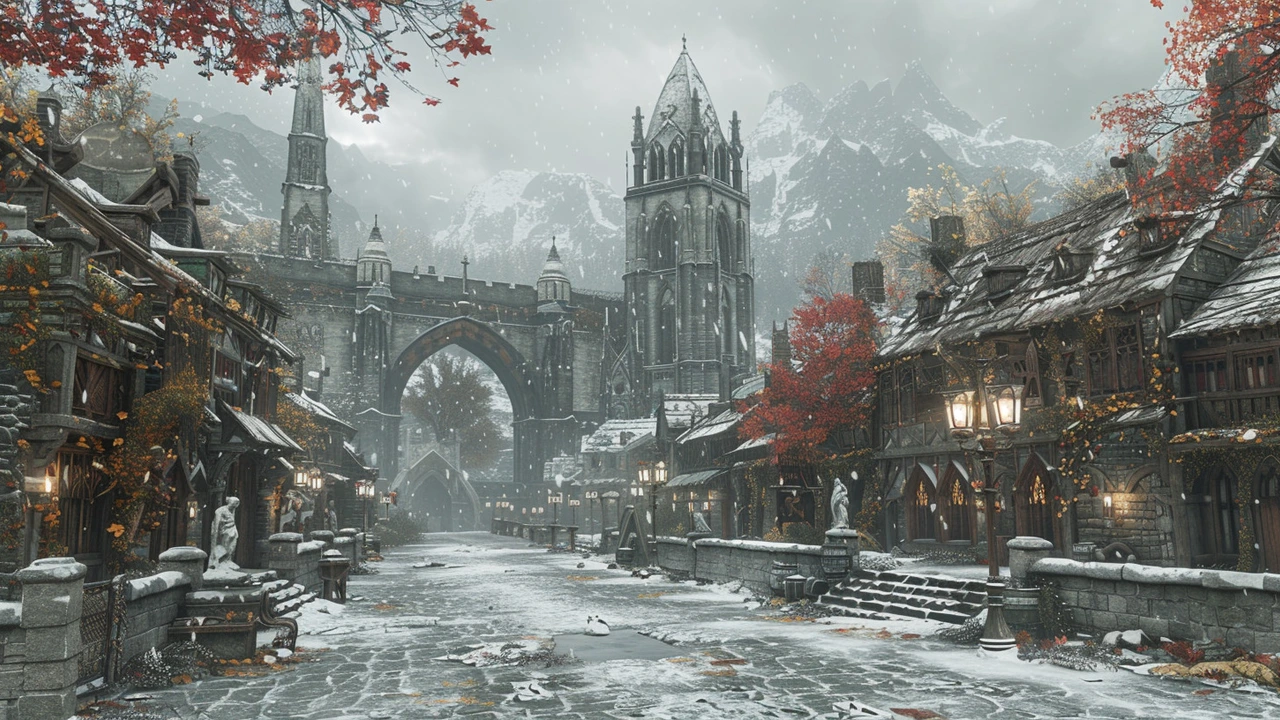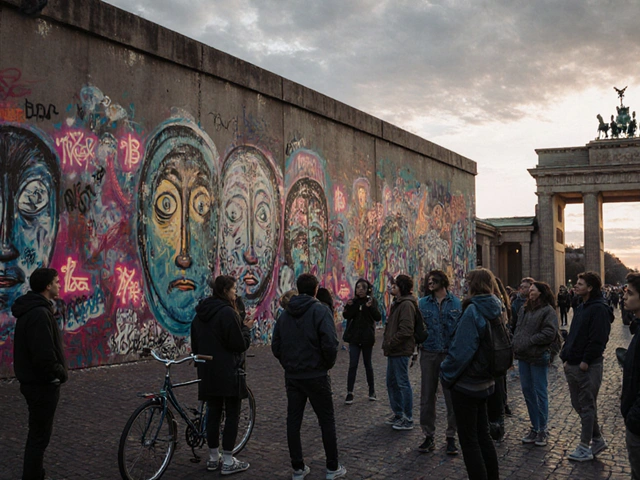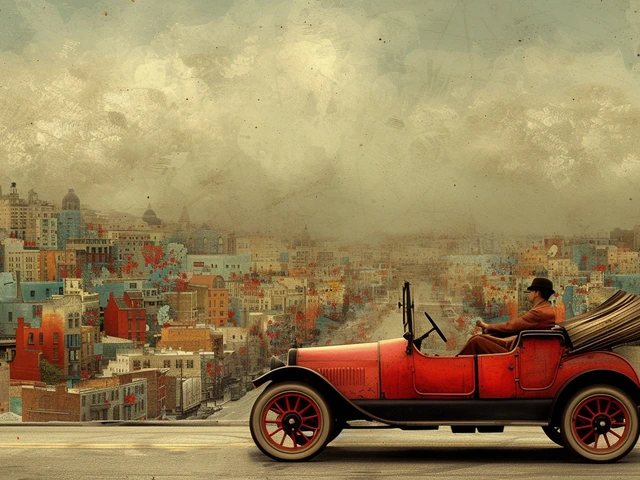Gothic art is an intriguing chapter in art history, marked by its unique intertwining of religious fervor and a keen sense of beauty. Emerging in the 12th century, this style revolutionized the visual and structural aspects of our world. With its soaring cathedrals, intricate sculptures, and illuminating stained glass, Gothic art offers a window into the spiritual and cultural life of the medieval era.
The origins of Gothic art can be traced back to France, with the construction of the Abbey of Saint-Denis. Gothic architecture, characterized by ribbed vaults, flying buttresses, and pointed arches, soon spread across Europe, leaving a profound architectural legacy.
Sculpture played a pivotal role in Gothic art, often adorning the facades of grand cathedrals. These sculptures were not merely decorative; they narrated biblical stories and conveyed religious teachings, blending art with doctrine.
Even today, the influence of Gothic art resonates, inspiring modern artists and architects. This enduring legacy underscores the timeless appeal of Gothic art's profound and evocative aesthetic.
Origins and Evolution
The origin of Gothic art can be traced back to the Île-de-France region of France in the 12th century. This transformative era began when Abbot Suger initiated the reconstruction of the Abbey of Saint-Denis around 1135. His vision was to create a space that would reflect heavenly light and elevate the soul through architectural innovation. This marked the birth of what we now recognize as Gothic architecture.
Gothic architecture quickly stood out for its distinctive features, such as ribbed vaults, flying buttresses, and pointed arches. These elements were not just aesthetically pleasing; they served practical purposes like supporting heavier roof structures and allowing for walls to be punctuated with larger windows. This innovation led to the creation of some of the most magnificent cathedrals across Europe, including Notre-Dame in Paris and Chartres Cathedral.
The Gothic style rapidly spread beyond France, influencing other parts of Europe such as England, Germany, and Italy. Each region adapted Gothic principles to their cultural context. In England, for instance, the Gothic style evolved into the English Gothic, characterized by features like fan vaulting, which can be admired in the cloisters of Gloucester Cathedral.
The profound religious significance of Gothic art cannot be understated. Churches and abbeys became more than just places of worship; they were visual narratives of biblical stories. Sculptures and stained glass windows in these structures depicted scenes from the Bible, saints, and angels, making religious teaching accessible to the illiterate masses of the medieval period. It was art serving faith in its purest form.
"The measure of Gothic architecture, its true criterion, lies in the power it possesses of raising the soul to God," wrote John Ruskin, a leading art critic of the 19th century.
During its evolution from the early to the late Gothic period, various sub-styles emerged, including the Rayonnant and the Flamboyant. The Rayonnant style, seen in the Sainte-Chapelle in Paris, emphasized more elaborate decorative details and an increased use of stained glass. On the other hand, the Flamboyant style, prominent in the late 15th century, showcased intricate stonework resembling flames, demonstrating a shift towards more ornate and complex designs.
The influence of Gothic art went beyond architecture, touching the realms of sculpture, painting, and even manuscript illumination. Gothic sculpture, often found adorning cathedral facades, was characterized by a heightened naturalism and expressiveness. In painting, the Gothic style can be seen in the illuminated manuscripts of the time, such as the Très Riches Heures du Duc de Berry, a masterpiece of Northern Gothic art.
This era of art wasn't just about religious expression but also reflected the socio-political landscape of medieval Europe. The flourishing trade, rise of urban centers, and the increased power of the Church all played a role in shaping Gothic art and architecture. Despite the passage of centuries, the magnetism and magnitude of Gothic art continue to enthrall and inspire. Its legacy, a testament to human creativity and spirituality, can still be felt and celebrated in the impressive stone and glass structures that stand tall today.
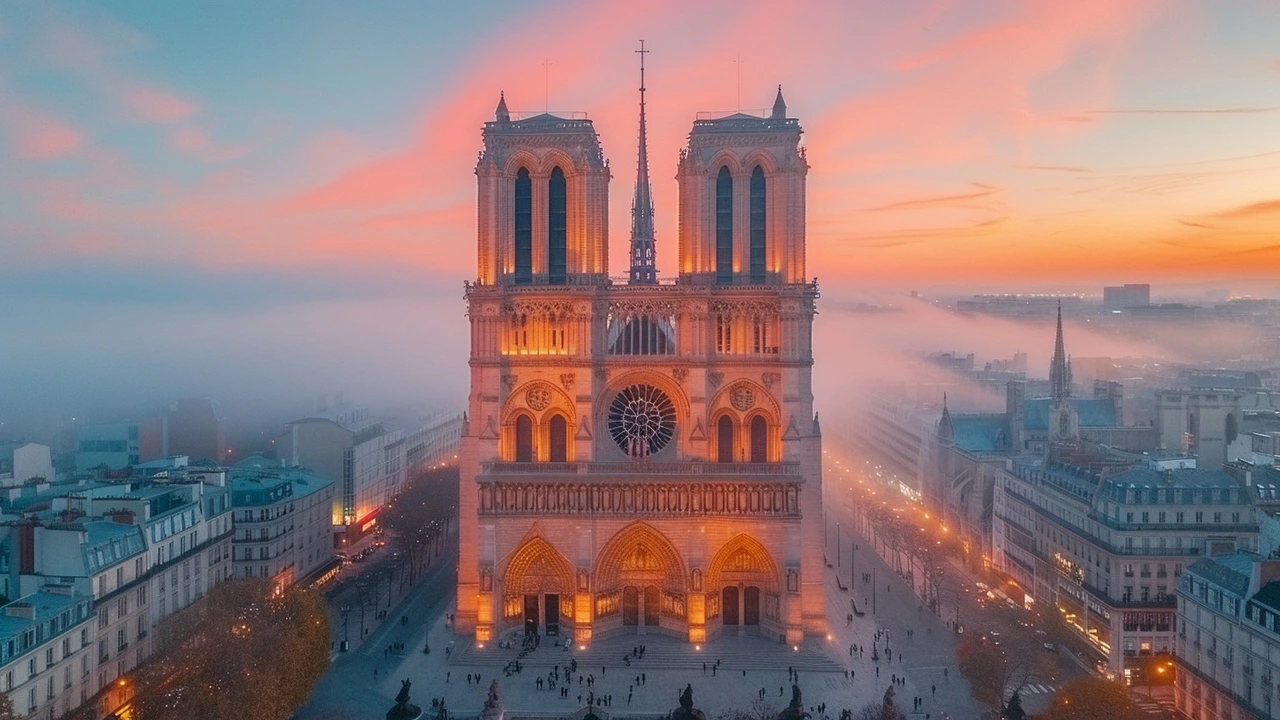
Architectural Marvels
Gothic architecture stands as one of the most mesmerizing achievements in human history, characterized by its structural innovation and artistic brilliance. The term 'Gothic' was originally used pejoratively to describe what critics considered to be an overly ornate style. However, today, it’s celebrated for its breathtaking cathedrals and churches that dominate the skylines of many European cities.
The advancements in construction techniques, such as the use of the pointed arch, ribbed vault, and flying buttress, allowed for building taller and more elaborate structures. These elements combined to not only create awe-inspiring interiors but also to enhance the stability of the buildings. One of the best examples is the Notre-Dame Cathedral in Paris, which took nearly 200 years to complete and remains a symbol of Gothic architecture.
The pointed arches were more than just decorative; they distributed the weight of the roof more evenly, allowing for thinner walls and larger windows. The ribbed vault was another crucial innovation, offering additional support and enabling the creation of complex, intersecting roof structures. The flying buttress, perhaps the most iconic feature, carried the weight of the high roofs outward and down to the ground, thus allowing for the inclusion of extensive stained glass windows that transformed the interior into a luminous, ethereal space.
Stained glass windows were not merely decorative elements. They served as visual storytelling tools illustrating biblical scenes and the lives of saints. These windows flooded the interior with multicolored light, creating a heavenly atmosphere intended to inspire awe and devotion. In the words of Abbot Suger, a pioneer of Gothic architecture, "The dull mind rises to truth through that which is material."
The interiors of Gothic cathedrals, with their soaring vaults and extensive use of stained glass, aimed to create a celestial experience on earth. The Chartres Cathedral in France is a prime example, renowned for its stunning blue stained glass windows depicting religious imagery. These windows still captivate visitors today, drawing them into a deeply spiritual and aesthetic experience.
Let's not forget about the intricate stone carvings that adorn the exteriors of these buildings. Gargoyles, chimeras, and other mythical creatures serve both practical and artistic purposes. While they act as waterspouts to divert rainwater from the roof, their grotesque forms were also meant to ward off evil spirits. The detailed craftsmanship evident in these stone carvings showcases the creativity and skill of Gothic artisans.
Among the many architectural marvels of the Gothic era, the Cologne Cathedral in Germany stands out for its exceptional height and intricate façade. Measuring over 157 meters, it held the title of the world's tallest building until the completion of the Washington Monument. Every detail, from the spires to the elaborate carvings, demonstrates the ambitions and artistic talents of its builders.
The influence of Gothic architecture extends beyond cathedrals and churches. Examples can be found in universities, town halls, and even residential buildings. The style’s grandiosity and attention to detail have left an indelible mark, inspiring generations of architects and artists. In modern times, Gothic revival has brought elements of this historic style into contemporary design.
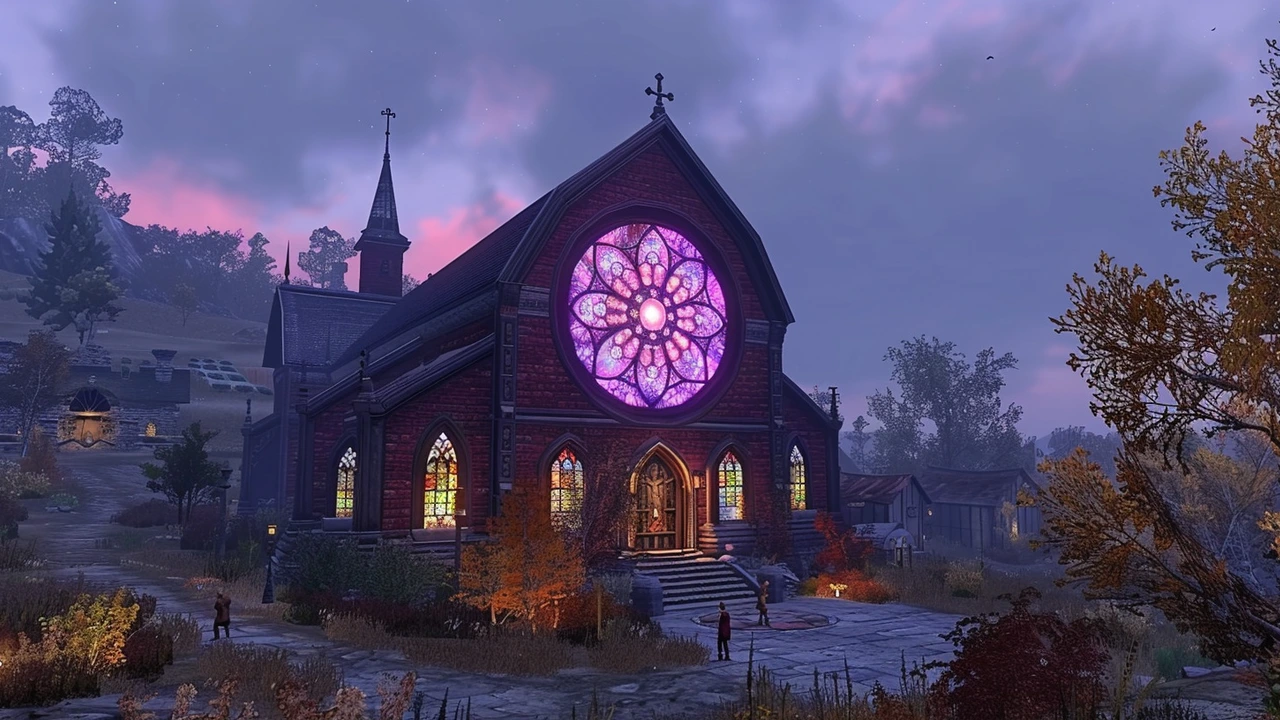
Gothic Sculpture
Gothic sculpture holds a special place in the pantheon of art history, captivating viewers with its expressive power and intricate details. Emerging alongside Gothic architecture in the 12th century, it transcended mere decorative forms to become a crucial medium for conveying religious narratives and spiritual sentiments. One cannot discuss Gothic sculptures without mentioning the splendor of Chartres Cathedral in France. This cathedral stands as an epitome of Gothic sculpture, adorned with a plethora of statues that breathe life into biblical tales.
The primary function of Gothic sculpture was to embellish cathedrals, churches, and other religious structures. These sculptures were not just embellishments but served the vital purpose of educating an illiterate populace about biblical stories and religious doctrines. The figures were often elongated and posed in dynamic, almost ethereal stances, designed to draw the viewer not just into a visual experience but a spiritual one as well. The west façade of Reims Cathedral, for instance, is a marvel of Gothic sculpture, with its famous smiling angels and kings depicting stories from the Old and New Testaments.
The Gothic artists were masterful in their use of symbolism. Their sculptures were filled with iconography that conveyed deep spiritual meanings. For instance, the gargoyles that adorned many Gothic cathedrals served dual purposes. Apart from their functionality as water spouts, they represented the concept of guardianship, believed to ward off evil spirits from the holy premises. As art historian Andrew Tallon aptly said, "Gothic sculpture threads the line between the mortal and the divine, acting as a bridge of understanding."
While stone remained the predominant medium, wood was also extensively used, especially in regions where stone was scarce. These wooden sculptures have survived the test of time and are celebrated for their intricate carving and lifelike expressions. One notable example is the wooden Madonna and Child at Notre-Dame de Paris, which is a masterpiece of Gothic artistry.
The influence of Gothic sculpture extended beyond religious confines, finding its way into tombs and public monuments. These sculptures followed the Gothic ethos, characterized by meticulous detailing and expressive realism. They depicted not just religious figures but also secular individuals in a reverential manner. The tomb effigies from Westminster Abbey, for example, showcase the high level of artistry and the importance of remembering the deceased with dignity and respect.
Today, Gothic sculpture remains a source of fascination and inspiration. Modern sculptors and artists look back at these medieval masterpieces, drawing lessons in technique and emotional depth. The resurgence of interest in Gothic art speaks volumes about its timeless appeal, echoing the spiritual and aesthetic aspirations of an age long gone but never forgotten. As visitors wander through the hallowed halls of ancient cathedrals, they continue to be moved not just by the grandeur of the architecture but also by the silent, stone figures that stand as eternal testaments to human creativity and faith.
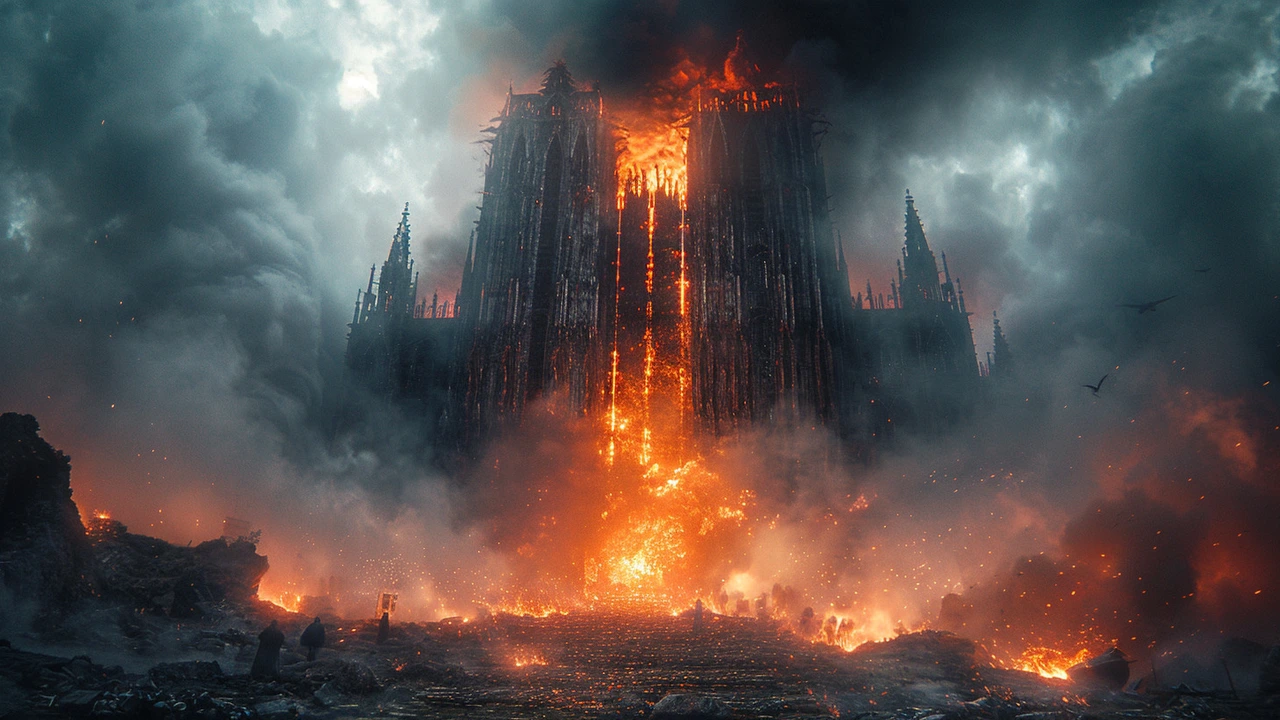
Impact on Modern Art
The influence of Gothic art on modern art is both profound and multifaceted. This ancient style has echoed through the centuries, leaving an indelible mark on various modern movements and artists. The visual vocabulary developed in the Gothic era - with its emphasis on verticality, light manipulation, and intricate detailing - continues to inspire contemporary creators and architects.
One prominent way Gothic art influences modern art is through architecture. The soaring cathedrals, with their ribbed vaults and flying buttresses, have directly inspired architects like Antoni Gaudí. His famed Sagrada Família in Barcelona incorporates these Gothic elements, blending them with modernism in a way that pays homage to the past while pushing the boundaries of contemporary design.
In fine art, the ghosts of Gothic aesthetics are quite visible. Artists such as Salvador Dalí and M.C. Escher drew upon the elaborate forms and dreamlike qualities of Gothic art to enhance their own surreal and intricate works. Dalí, in particular, admired the mystique of this period, often infusing his pieces with a sense of eerie, Gothic ambiguity.
Even in today’s popular culture, Gothic art's impact is unmistakable. Many fantasy films, video games, and even music videos utilize the dramatic and otherworldly aspects of Gothic architecture and design. These elements help to create a visually rich and emotionally compelling atmosphere that resonates with audiences worldwide. For instance, Tim Burton’s films are replete with Gothic influences, utilizing stark contrasts, towering structures, and intricate details to craft unique, fantastical worlds.
It's worth noting that the Gothic revival in the 19th century, particularly in England, played a critical role in cementing the style's lasting impact. Figures like Augustus Pugin promoted the aesthetic for its spiritual and moral values, which he believed were necessary antidotes to the industrial age's sterility. This revival ensured that Gothic elements would continue to influence modern architectural styles and other artistic endeavors.
In modern photography and digital art, Gothic themes are embraced for their dramatic and evocative qualities. Photographers often use the interplay of light and shadow to create a sense of mystery and depth, much like the stained glass windows of the great cathedrals used light to tell sacred stories. Even in digital art, Gothic-inspired designs flourish, blending medieval motifs with futuristic visions to create something profoundly timeless yet avant-garde.
The enduring appeal of Gothic art lies in its ability to evoke emotions and provoke imagination, bridging the gap between the past and the present. As modern artists and architects continue to draw inspiration from this rich tradition, the Gothic influence is likely to remain a vital and dynamic force in the world of art and design, reminding us of a profound legacy that shaped our visual and cultural landscapes.

